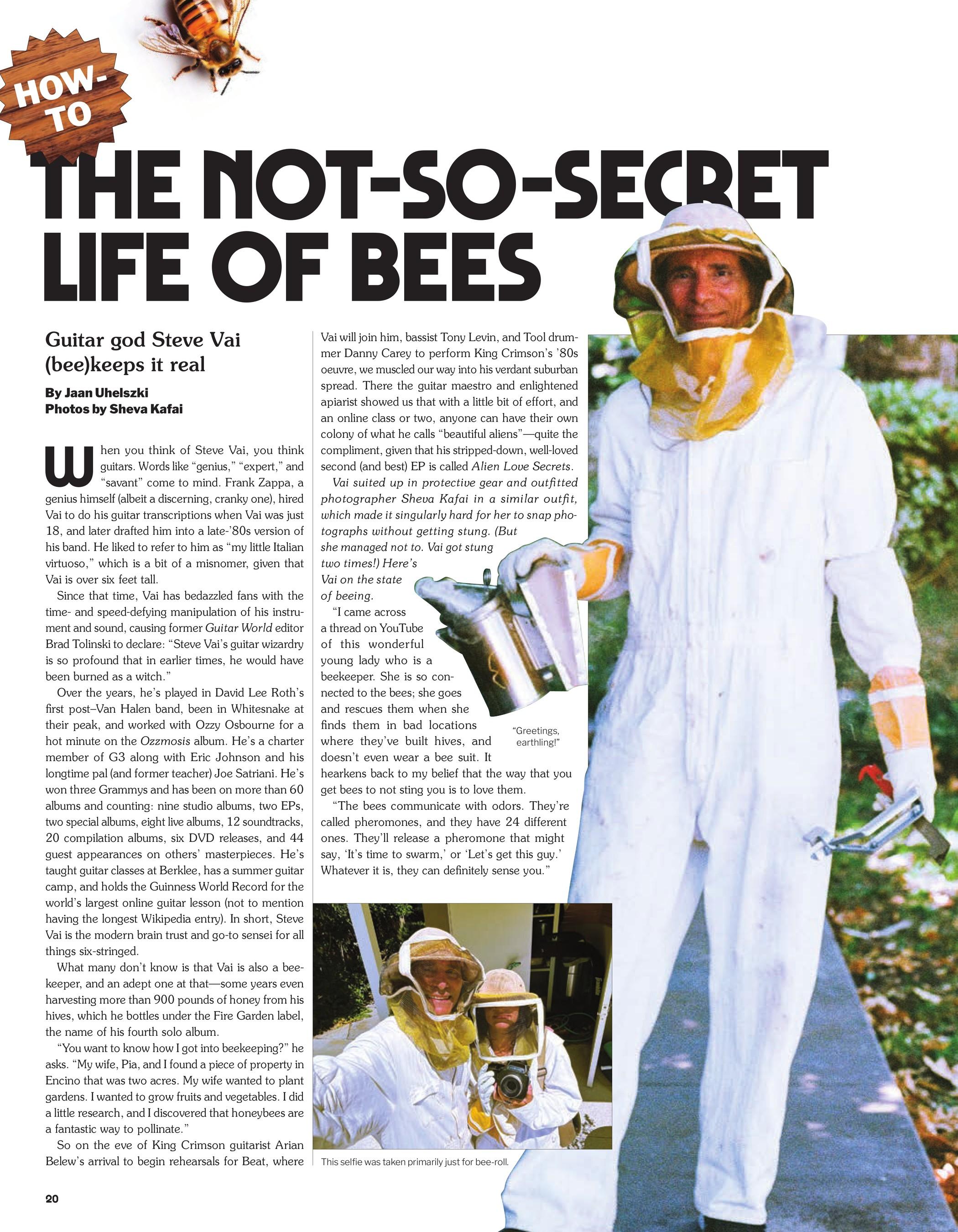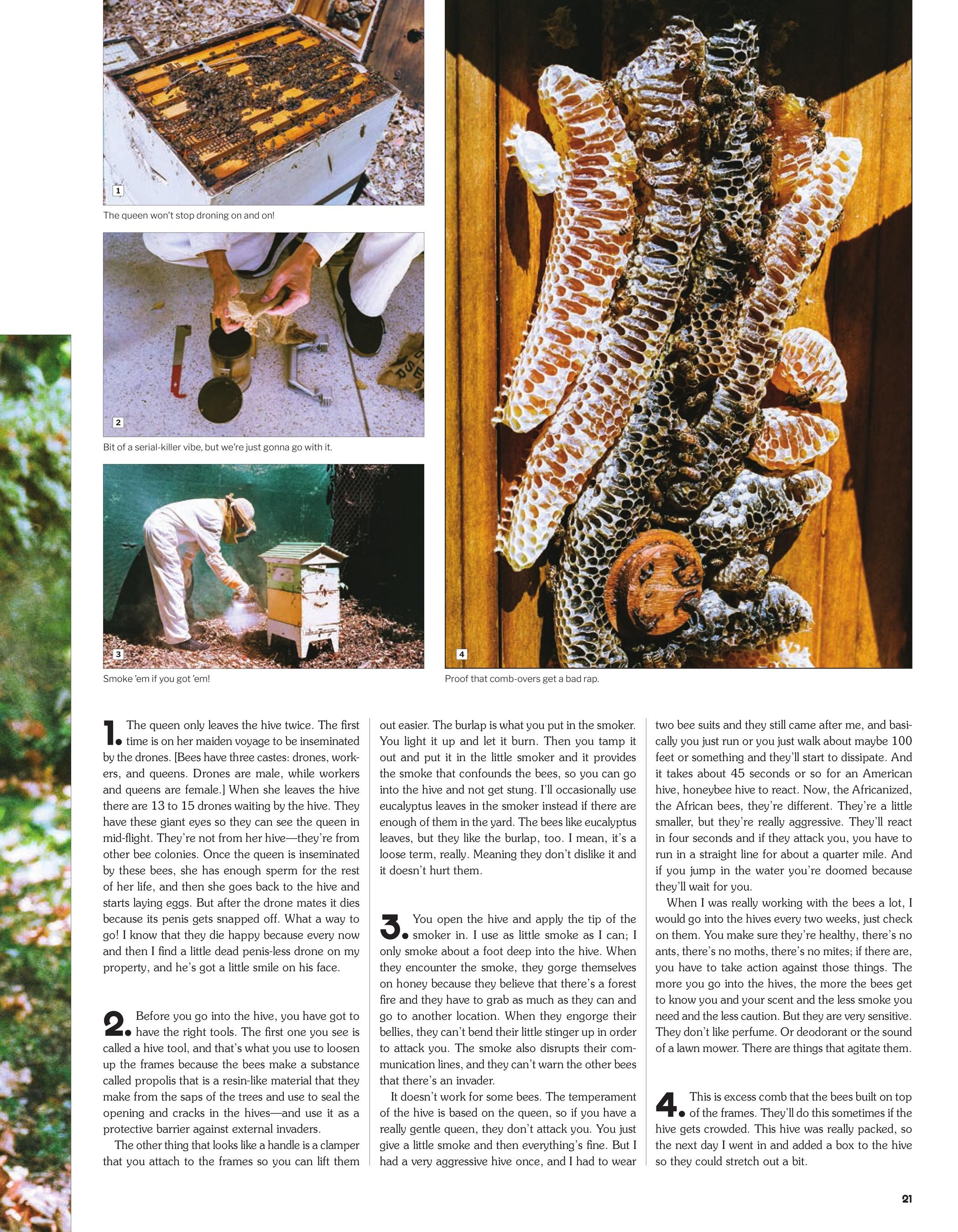How-To
THE NOT-SO-SECRET LIFE OF BEES
Guitar god Steve Vai (bee)keeps it real
September 1, 2024


When you think of Steve Vai, you think guitars. Words like “genius,” “expert,” and “savant” come to mind. Frank Zappa, a genius himself (albeit a discerning, cranky one), hired Vai to do his guitar transcriptions when Vai was just 18, and later drafted him into a late-’80s version of his band. He liked to refer to him as “my little Italian virtuoso,” which is a bit of a misnomer, given that Vai is over six feet tall.
Since that time, Vai has bedazzled fans with the timeand speed-defying manipulation of his instrument and sound, causing former Guitar World editor Brad Tolinski to declare: “Steve Vai’s guitar wizardry is so profound that in earlier times, he would have been burned as a witch.”

